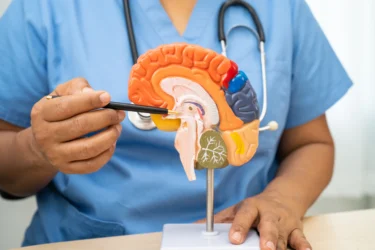Mandukaparni (Gotu Kola): Uses, Benefits, Side Effects, and more!
By Dr Anuja Bodhare +2 more

Get,

to manage your symptom
Get your,


4 Cr+ families
benefitted

OTP sent to 9988776655



You’ve successfully subscribed to receive
doctor-approved tips on
Whatsapp

Get ready to feel your best.

Hi There,
Download the PharmEasy App now!!


Register to Avail the Offer
Send OTPBy continuing, you agree with our Privacy Policy and Terms and Conditions

Hi There,
Sign up on PharmEasy now!!
Trusted by 4 crore+ families

OTP sent to 9988776655



You have unlocked 25% off on medicines




Code: NU25
By Dr Anuja Bodhare +2 more
Table of Contents
Mandukaparni, scientifically known as Centella asiatica, is a medicinal herb. It is also known as Jalbramhi or Indian pennywort. Mandukaprni has been used as Ayurvedic medicine in India for thousands of years, and it is mentioned in the historic Indian medical text called ‘Sushruta Samhita’. This plant is found throughout India. It is grown in tropical and subtropical countries like Sri Lanka, Pakistan, India, South Africa, Madagascar, South Pacific, and Eastern Europe1. In addition to the Ayurvedic system of medicine, mandukaparni has a long history of use in traditional Chinese medicine2.
Mandukaparni contains proteins, carbohydrates, dietary fibres, fats, vitamins A, B, and C; minerals include iron, sodium, potassium, phosphorous, calcium, and magnesium. Mandukaparni also contains phytoconstituents like flavonoids, polyphenols, tannins, carotenoids, triterpenoids, and volatile oils3.

Mandukaparni has a wide range of properties like:
Potential uses of mandukaparni against many health conditions are given below.

Several preclinical (animal) studies1 have demonstrated the wound healing benefits of mandukaparni. It may help in wound healing by promoting skin thickening, cell growth, and tissue regeneration. In addition, Mandukaparni might strengthen newly formed skin, reduce inflammation, and provide antioxidant properties. Antioxidants play an essential role in the wound healing process. However, you must consult a healthcare provider if you encounter any wounds. Avoid using any herbs and remedies without a doctor’s consultation.

According to animal studies1, mandukaparni was found to show antidepressant properties. Certain compounds called triterpenes present in mandukaparni may be responsible for this activity. Mandukaparni could also increase dopamine levels (neurotransmitters) in the brain. An increase in the levels of dopamine might help deal with depression. If you are suffering from any brain condition, you must talk to your healthcare provider. Do not take any for the brain without consulting with your doctor first.
Animal studies1 of mandukaparni could show a reduction in seizures and improvement in learning deficits caused by seizures. The findings also suggested that mandukaparni might be an adjuvant to anti-seizure drugs, with the benefit of preventing cognitive impairment (trouble in learning, remembering, and concentrating). Leaf extract of mandukaparni has also been shown to have anticonvulsive properties. The benefits of mandukaparni against seizures have been observed in animal studies.
Mandukaparni may have some benefits in improving concentration, increasing attention span, and reducing oxidative stress. Oxidative stress causes Alzheimer’s, and cognitive impairment is caused by free radical generation. Mandukaparni effectively prevented cognitive deficits and oxidative stress during an animal trial. In addition, it may show the potential to boost antioxidant enzymes and protect neurons (nerve cells) from oxidative damage.Therefore, mandukaparni might be used for the management of Alzheimer’s disease1. However, it should not be used as an alternative to medicinal treatment.
More studies are required to support the use of mandukaparni in humans. You must, adhere to the doctor’s advice and treatment for conditions related to brain.

In a lab study, mandukaparni extract effectively prevented alcohol-induced stomach lesions. It could strengthen the stomach mucosal barrier and reduce the damage caused by free radicals. Mandukaparni could also promote stomach ulcer wound healing through its anti-inflammatory properties. The effectiveness of mandukaparni in wound healing has also been proved by clinical studies (human trials)1. Therefore, it may be used in managing stomach lesions. However, you need to consult your healthcare provider if you have any stomach problems. Self-medicating with herbs may worsen the condition.
I want to highlight that the water-based extract of Mandukaparni may have shown beneficial effects in rats. It may help alleviate intestinal spasms caused by barium chloride, reduce spontaneous contractions of the muscles of the intestine, and relax the muscles of the isolated ileum. However, more studies on humans are needed to verify its impact5.
Dr. Siddharth Gupta, B.A.M.S, M.D (Ayu)

In animal studies1, it was shown that mandukaparni extract could provide significant relief from pain and inflammation. It is also revealed that oral administration of mandukaparni could reduce the severity of arthritis. Mandukaparni also prevented joint destruction. In preclinical studies, mandukaparni successfully prevented the onset of arthritis and provided relief from its symptoms.

Mandukaparni may help manage heart diseases. The main components that might be responsible for these benefits are Asiaticoside and Asiatic acid. Several animal studies have shown that mandukaparni may effectively improve heart conditions like hypertension, atherosclerosis (a thickening of the blood vessel walls caused due to fat deposition), and cardiac ischaemia (deficient blood supply to the heart muscle)4. However, heart diseases are severe health conditions. Therefore, you must strictly adhere to the doctor’s advice and treatment.

According to several lab studies, mandukaparni showed promising results in reducing high blood pressure. This effect of mandukaparni on hypertension may be due to the antihypertensive properties of Asiatic acid4. However, you are advised not to use mandukaparni as an alternative to medicinal treatment. If you are suffering from high blood pressure, consult your healthcare provider before using herbs for your symptoms.

The anti-inflammatory and antioxidant properties of mandukaparni may be beneficial in various skin conditions like acne, baldness, and atopic dermatitis (skin itching and inflammation). Because of its anti-inflammatory property, it may reduce the inflammation associated with skin conditions. It may also lower oxidative stress through its antioxidant activity4. If you are suffering from any skin conditions, you need to reach out to a skin doctor and get proper treatment. Avoid using any herbs for your skin without consulting with a doctor first.
Though there are studies showing the benefits of manukaparni in various conditions, these are insufficient, and there is a need for further studies to establish the true extent of the benefits of mandukaparni on human health.
Did you know that Mandukaparni is not only great for healing wounds but may also have been recommended for managing various conditions like leprosy, lupus, and varicose ulcers? Yes, from what I have seen, people have found it helpful in managing these problems and often use it as a natural remedy6.
Dr. Rajeev Singh, BAMS
Various preparations of mandukaparni are available in the market.
You must consult a qualified doctor before taking mandukaparni or any herbal supplements. Likewise, do not discontinue or replace an ongoing treatment of modern medicine with an ayurvedic/herbal preparation without consulting a qualified doctor.
An interesting traditional use of Mandukaparni that I’ve come across is its positive effect in dealing with amenorrhea (absence of menstruation) and diseases related to the female genitourinary tract. It seems to have been valued for its potential benefits in addressing these specific health concerns6.
Dr. Smita Barode, B.A.M.S, M.S.
In recommended doses, mandukaparni has no known side effects.
Also, before using mandukaparni for any health benefits, make sure you have consulted your doctor about the possible side effects associated with its use. Then, it will help you make well-informed choices.
You need to take the following precautions while using mandukaparni.
If you want to use mandukaparni for any disease conditions, you need to talk to your healthcare provider about the possible precautions associated with mandukaparni. It will help you avoid any unwanted health effects.
Also Read: Punarnava: Uses, Benefits & Side Effects
There are no reported interactions between mandukaparni and other drugs. Because of the varied medicinal activities of mandukaparni, care should be taken when taking it with:
Because high doses of mandukaparni can cause sleep, one should avoid taking this herb with medications that reduce anxiety or promote sleep.
Because mandukaparni has been shown to affect blood glucose levels, it may interact with antidiabetic medications1.
If you are taking medicines for any health conditions, consult your healthcare provider about the possible interactions of your medicines with other herbs and drugs. Doing so will help you avoid unwanted herb-drug interactions.
Mandukaparni is a herb with numerous medicinal properties that may help manage various health problems. Centella asiatica is the scientific name of this herb1.
Mandukaparni is also known as Gotu kola, Asiatic pennywort, Indian pennywort,
Indian water navelwort, wild violet, Jalbrahmi, and tiger herb1,2.
Mandukaparni may be helpful for vital organs in our body, including the heart, brain, and liver4. It may also be effective in managing gastric ulcers, arthritis, and wounds. However, you are advised to consult your healthcare provider before using mandukaparni for these conditions.
Mandukaparni might be beneficial to people who have arthritis. In animal studies, it was found to provide significant relief from pain and inflammation and also reduce the severity of arthritis. Mandukaparni may also be effective in preventing joint destruction1. Because of these properties, mandukaparni might be helpful in arthritis. Still, it should not be used in place of conventional treatment. Consult your doctor before starting any new therapy for arthritis.
1. Gohil KJ, Patel JA, Gajjar AK. Pharmacological Review on Centella asiatica: A Potential Herbal Cure-all. Indian Journal of Pharmaceutical Sciences [Internet]. 2010 Sep [cited 2022 Apr 15];72(5):546. Available from: https://www.ncbi.nlm.nih.gov/pmc/articles/PMC3116297/
2. Orhan IE. Centella asiatica (L.) Urban: From traditional medicine to modern medicine with neuroprotective potential. Evidence-based Complementary and Alternative Medicine.2012 Oct;2012. Available from: https://pubmed.ncbi.nlm.nih.gov/22666298/
3. Chandrika UG, Kumara PA. Gotu Kola (Centella asiatica): nutritional Properties and plausible health Benefits. Advances in food and nutrition research [Internet]. 2015 Jan [cited 2022 Apr 15]; 76:125–57. Available from: https://pubmed.ncbi.nlm.nih.gov/26602573/
4. Sun B, Wu L, Wu Y, Zhang C, Qin L, Hayashi M, et al. Therapeutic Potential of Centella asiatica and its triterpenes: A review. Frontiers in Pharmacology [Internet]. 2020 Sep [cited 2022 Apr 17];11. Available from: https://www.frontiersin.org/articles/10.3389/fphar.2020.568032/full
5. Ashalatha M, Shenoy LN. A review on Mandukaparni [Internet]. Int Ayurvedic Med J. 2016; (Review Article). [cited 2026 Jan 16]. Available from: https://www.iamj.in/public/article/doi/129_140.pdf
6. Gohil KJ, Patel JA, Gajjar AK. Pharmacological Review on Centella asiatica: A Potential Herbal Cure-all. Indian J Pharm Sci. 2010 Sep;72(5):546-56. doi: 10.4103/0250-474X.78519. PMID: 21694984; PMCID: PMC3116297. Available from: https://pmc.ncbi.nlm.nih.gov/articles/PMC3116297/
Disclaimer: The information provided here is for educational/awareness purposes only and is not intended to be a substitute for medical treatment by a healthcare professional and should not be relied upon to diagnose or treat any medical condition. The reader should consult a registered medical practitioner to determine the appropriateness of the information and before consuming any medication. PharmEasy does not provide any guarantee or warranty (express or implied) regarding the accuracy, adequacy, completeness, legality, reliability or usefulness of the information; and disclaims any liability arising thereof.
Links and product recommendations in the information provided here are advertisements of third-party products available on the website. PharmEasy does not make any representation on the accuracy or suitability of such products/services. Advertisements do not influence the editorial decisions or content. The information in this blog is subject to change without notice. The authors and administrators reserve the right to modify, add, or remove content without notification. It is your responsibility to review this disclaimer regularly for any changes.
Comments

Leave your comment...
You may also like
Comments